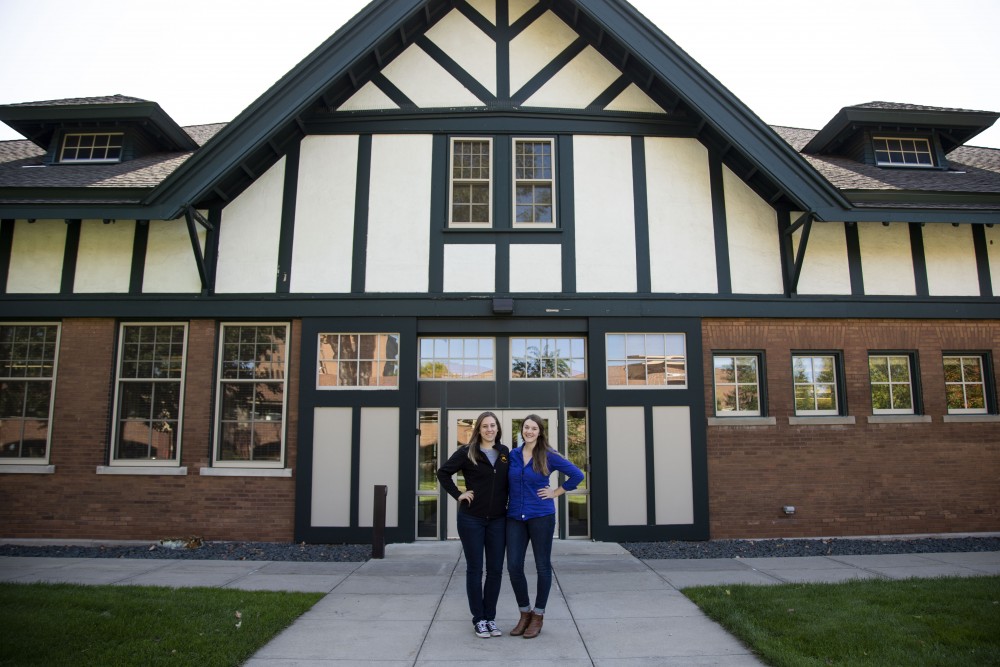The University of Minnesota’s College of Veterinary Medicine recently implemented new policies to help students with their mental health and other stressors, amid increasing awareness of high suicide rates among veterinarians across the country.
For the first time this semester, all classes for first-year CVM students are pass/fail in an effort to ease the transition into the vigorous program. In addition, the college began implementing a policy last month that gives fourth-year students established working hours during clinical rotations.
At the University, veterinary students often take anywhere from 25 to 30 or more credits per semester — an amount many University students take in a whole year. Additionally, many students pursuing their doctorate degree end up leaving veterinary school with around $200,000 in debt.
Some in the school, including students and faculty, say high rates of suicide among veterinarians compared to the general population have in part contributed to the new policy changes. Veterinarians have a higher risk of dying by suicide compared to the general population, according to a 2019 study published in the Journal of the American Veterinary Medical Association. Female veterinarians in particular are up to 3.5 times more likely to do so than the general U.S. population, the study found.
In light of these statistics and rising mental health concerns, the University is starting these policies to help students, as many believe that mental health issues start in graduate school. In addition, the school has increased the amount of scholarship funding given to students each year in an effort to reduce stress surrounding debt.
“When you see the credit numbers, when you see the debt numbers to the income numbers, when you see the suicide rate … you can see where [the] picture starts to paint,” third-year veterinary student Erika Wehmhoff said.
As a lead mental health advocate in the college, Erin Malone, CVM’s assistant dean of curriculum, said course load, debt and the job environment are all contributing factors to the increase of mental health issues within the field.
“A few years ago, we started seeing the numbers of veterinary suicides and the levels of anxiety and depression, and we knew it was affecting the vet students too,” Malone said. “It’s a high-quality, high-workload program.”
In order to address these issues, both students and faculty are working together to promote mental health and wellness throughout the college.
Wehmoff and fellow third-year veterinary student Jessi Coryell are executive board members of the Student American Veterinary Medical Association at the University. This student-run organization works on a national level with the American Veterinary Medical Association to advocate for veterinary students.
Last year, SAVMA representatives voted on an initiative that established working hours for veterinary students as they work on clinical rotations, typically their fourth year. In September, the CVM began implementing this policy that gives students one day off for every seven days of work and grants students a 30-minute break for every six hours of work during clinical rotations.
Other student organizations, like Just Breathe, are giving veterinary students a space to take time away from school work and decompress. At meetings, students do what Wehmhoff calls “random, fun, mini mental breaks” like yoga or tea parties.
“It’s okay to do things for yourself … even if it’s just little things” Coryell said.
The CVM also hosts Wellness Wednesdays every month, where students can talk and learn about the issues that face the veterinary community and how to address them.
The school also works to connect alumni mentors with current students. Wehmhoff and Coryell both said that they have formed a close working relationship with their alumni mentors and that the program helps reduce feelings of isolation and fatigue.
“It’s nice to have someone who has understood and been through that course load as well to say, ‘You can make it. I made it [and] you can make it too,’” Wehmhoff said.
Athena Diesch-Chham is a social worker for the CVM, and this year, she has taken on a larger role in working with students to address mental health issues and promote wellness. Diesch-Chham gives lectures throughout the year and has created a “process group” for veterinary students. In the group, students are encouraged not to vent about their problems, but to analyze and work through them.
“Each individual school [nationwide] is just trying a lot of things to see if we can get our students to a healthier place,” Diesch-Chham said. “I firmly believe the only way to have healthy veterinarians is if we’re not breaking them in vet school.”
Malone said that many veterinary students knew they wanted to become veterinarians by the time they were 3 years old, and the school is working to help them achieve these lifelong goals and thrive in the field.
“If we can get the skill set down, decrease the debt, decrease the workload, create the environment, maybe we won’t be losing so many [veterinarians],” Malone said.








